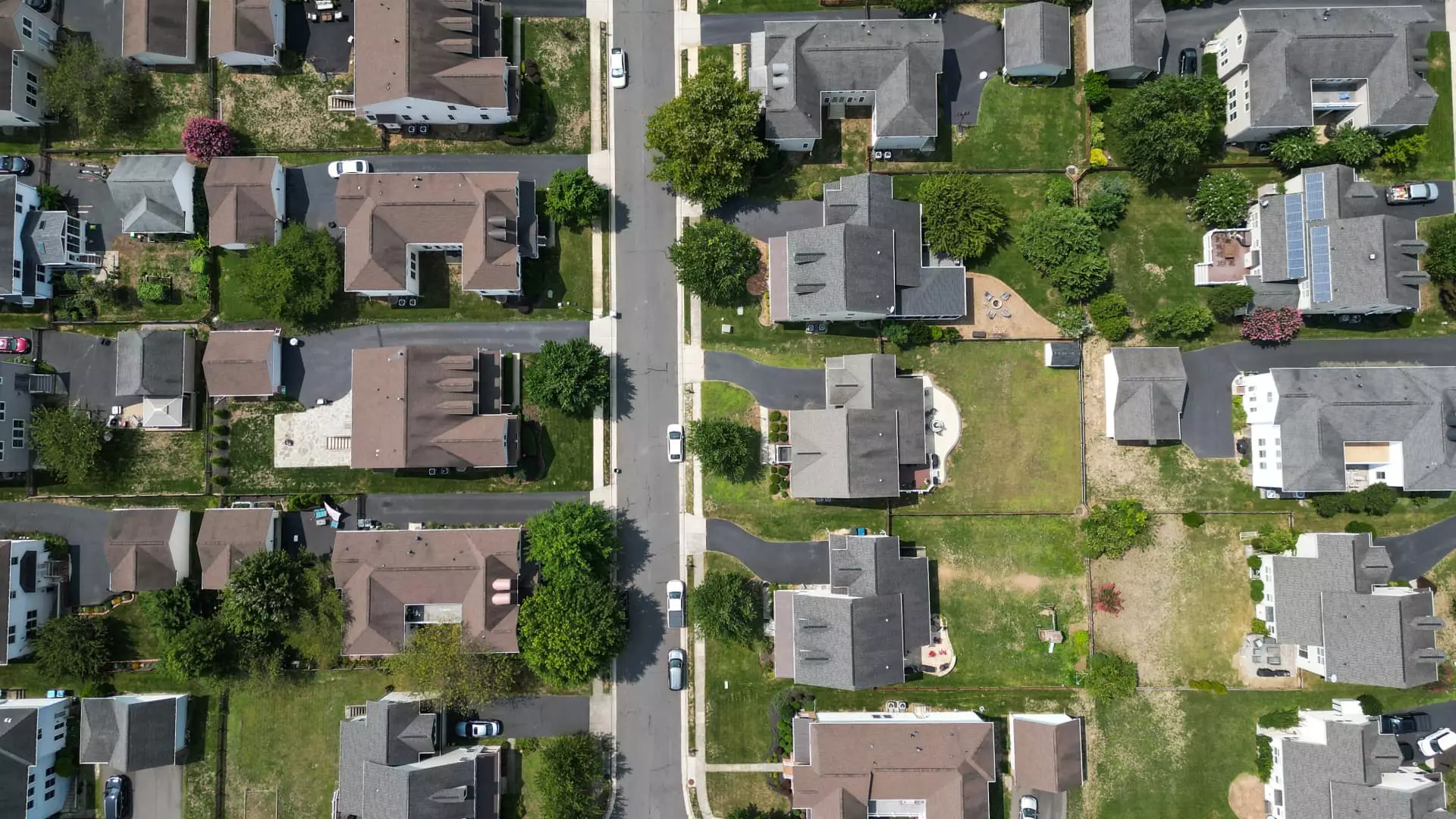In recent weeks, mortgage rates have surged to their highest point in over a month, illustrating just how unpredictable the real estate market can be. The latest data reveals a troubling shift as the average 30-year fixed rate climbed a staggering 25 basis points within just two days, reaching 6.85%. This rapid change has not only wiped out the modest improvement from the previous week but has also left many homebuyers reeling. The dynamic interplay between the stock and bond markets has created a vortex of uncertainty for those interested in entering the housing market, raising questions about the sustainability of any changes.
What initially appeared as a hopeful trend—mortgage rates dipping last week to the lowest level since the previous October following the announcement of global tariffs—has quickly unraveled. Investors reacted sharply to the news, prompting a significant influx into the bond market and causing bond yields to plummet unexpectedly. This sharp contrast contrasts starkly with the typical sluggish pace of mortgage rate adjustments, creating a sense of volatility that has left many potential homeowners feeling lost.
The Role of Economic Discourse
Chief Economist Matthew Graham articulated a crucial perspective by attributing last week’s temporary drop to “knee-jerk reactions” based on looming economic fears. However, with officials softening their rhetoric around tariffs—some even casually dismissing them as “melting ice cubes”—the market appears to have recalibrated itself. The quotation encapsulates a broader sentiment: markets thrive on clarity, and without it, the volatility will likely persist.
It’s one thing for the markets to react to economic indicators, but it’s another entirely when political decisions influence consumer sentiment. The Treasury Secretary’s remarks do little to comfort the average homebuyer who is already facing fears about job security and rising living costs. As the market continues to fluctuate in response to ambiguous negotiations, the potential for long-term economic stability feels increasingly tenuous.
The Impact on the Housing Market
The timing of these rate hikes couldn’t be more problematic. As we enter what is traditionally seen as the bustling spring housing season, rising mortgage rates inevitably restrict homebuyer activity. The combination of escalating home prices and deepening economic uncertainty creates a double whammy of discouragement for those looking to secure a new home. This spring, housing experts are expressing cautious optimism, noting an increase in listings—an essential factor for potential buyers. Yet, despite the uptick, the reality is clear: many prospective buyers remain sidelined.
The National Association of Realtors, for one, has provided disheartening statistics: pending home sales only edged up a meager 2% in February, further emphasizing a struggle to regain momentum. This sluggish performance is not merely an anomaly; it is emblematic of a market grappling with broader economic issues that have yet to be resolved.
The Road Ahead: What Buyers Should Anticipate
Looking forward, the trajectory of mortgage rates is exceedingly hard to predict but is closely tied to newly released economic data. Upcoming reports, including the consumer price index and producer price index, hold the potential to sway market sentiments significantly. A favorable reading could ease fears and even lead to a favorable economic climate conducive to falling mortgage rates. However, if the data signals further economic fragility, we could see additional rises in rates, closing doors on homeownership dreams for even more Americans.
How the economy responds in the short term will have significant implications not just for buyer confidence, but also for the broader housing market. As buyers wait with bated breath for these indicators, it is crucial that the government prioritizes effective, transparent economic measures to restore faith among professionals and consumers alike, or risk finding ourselves in a cycle of increased uncertainty and stagnant growth.
In essence, as mortgage rates bounce around the 6.85% mark amidst varying economic signals, it’s critical to understand that the ramifications extend beyond individual buyers; they affect entire communities. Solutions that foster stability, focused on increasing affordability and reducing uncertainty, should be at the forefront of economic policy as we navigate this unpredictable terrain.

